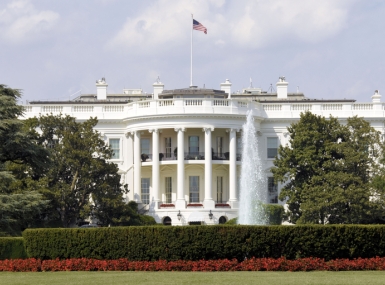High court to examine use of ‘excessive force’
Author

Lisa Soronen

Charlie Ban
Upcoming Events
Related News
Since the 1980s, the U.S. Supreme Court has been clear: a pretrial detainee's right to be free from excessive force derives from the 14th Amendment's Due Process Clause. But what does that mean exactly? The high court will lay out the specifics in Kingsley v. Hendrickson .
The constitutional standard for the use of excessive force depends on whether a person is an arrestee, a pretrial detainee or a sentenced inmate.
The Fourth Amendment applies to arrestees, the 14th Amendment's Due Process Clause applies to pretrial detainees, and the Eighth Amendment applies to those convicted.

 More on Kingsley v. Hendrickson
More on Kingsley v. Hendrickson
Not surprisingly, the standard that applies to arrestees is less deferential to law enforcement than the standard that applies to those who have been convicted. Force against an arrestee must be "objectively reasonable," while force against a sentenced inmate must merely not be "cruel and unusual."
The Supreme Court has never defined the substantive standard for excessive force claims by pretrial detainees.
Pretrial detainee Michael Kingsley alleges two police officers used excessive force against him when they transferred him to a different cell so they could remove a piece of paper covering the light over his bed, which he refused to remove. In the process, his feet smacked against the bedframe, an officer kneed him in the back, he was Tasered so his handcuffs could be removed, and he claims an officer smashed his head against the concrete bunk.
At trial, the jury instruction stated that for Kingsley to win his excessive force case he had to prove that the officers acted "recklessly." Kingsley claims that the jury instruction should have been less deferential to the officers and that he should have only had to prove that they failed to act "objectively reasonable."
The 7th U.S. Circuit Court concluded that the jury instruction was adequate. The court had previously said that force under the Due Process Clause must "incorporate some measure of subjective intent" and must be at least reckless. And the 7th Circuit, in some cases, had applied the Eighth Amendment standard.
What's at Stake
State and local government officials can be sued for money damages for constitutional violations. A legal standard more deferential to government officials, such as police, means that successful pretrial detainee excessive-force lawsuits would be less likely. More significantly, different excessive force standards for pretrial detainees and sentenced inmates, who are often housed in the same facility, would be difficult for correctional officers to comply with.
After all, correctional officers must make split-second decisions regarding the use of force and may not know whether an incarcerated person is a pretrial detainee or has been convicted.
Attachments
Related News

County Countdown – June 30, 2025
Every other week, NACo's County Countdown reviews top federal policy advocacy items with an eye towards counties and the intergovernmental partnership. This week features the Senate reconciliation debate, transparency on sanctuary designations and more.

DHS releases list identifying sanctuary jurisdictions; includes nearly 400 counties
NACo, along with the National League of Cities, and the International Municipal Lawyers Association, requested additional clarification on the methodology used to create the list, and noted concerns around the legal challenges that localities face when complying with ICE detainers. As of this time, NACo has yet to hear of a county receiving a formal notification that they were included on the list.

U.S. House of Representatives introduces legislation to expand Medicaid coverage for behavioral health treatment facilities
On June 20, a bipartisan group of lawmakers introduced the Increasing Behavioral Health Treatment Act in the U.S. House of Representative. This bill aims to improve access to behavioral health care nationwide by removing long-standing Medicaid funding restrictions for behavioral health treatment in certain facilities, providing new flexibility for states and counties to meet growing behavioral health needs.